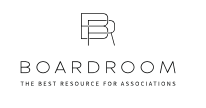ETHA case study looks at the importance of where, and how, alliance was launched.
Officially launched at the end 2017, the European Thrombosis and Haemostasis Alliance (ETHA) was formed to advocate for better awareness and prioritisation of thrombosis and haemostasis in European Union patient safety and research programmes. Initiated by the International Society on Thrombosis and Haemostasis (ISTH), it’s an example of how international organisations can expand their European — and even global — footprint by being in an association hub like Brussels. Thomas Reiser, ISTH executive director, explains why there couldn’t be a better place — or time —for the birth of ETHA.
Interview by Rémi Dévé
How did the European Thrombosis and Haemostasis Alliance initially come about?
The European Thrombosis and Haemostasis Alliance is currently comprised of 21 European national, regional, and speciality societies representing the field of thrombotic and bleeding disorders. ETHA was formed out of the need for a united voice of the EU thrombosis and haemostasis community in order to represent the field, make recommendations on EU research programme funding, and encourage sharing and adoption of best practices in the treatment and prevention of thrombotic and bleeding disorders across EU member states.
The impetus for it came out of a recent ISTH strategic planning exercise. This identified the need for ISTH to seek closer collaborations with — and support the efforts of — national and regional organisations around the world in not only scientific matters, but also in the areas of raising awareness about bleeding and clotting disorders and their impact on public health among the general public and policymakers.
As an international society, you initiated the alliance. Do you consider this a growth strategy?
Unlike many other medical and scientific fields, in the field of thrombosis and haemostasis a European organisation does not exist. This is probably due to ISTH’s strong overall “presence” in Europe through our activities, members, and leaders from Europe, even if we do not (yet) have a permanent physical presence in the EU.
In addition, we at ISTH are very focused on seeking partnerships. We have built, over decades, strong collaborations with over 100 national thrombosis and haemostasis societies around the world. So, it was a natural step for us to initiate the alliance after consultation with our European sister societies. And while the alliance in itself is not in support of a growth strategy for ISTH per se, it has the benefit of further strengthening ISTH’s position in Europe.
Do you find this kind of regional federation of sister societies is a business model that ‘fits’ international associations like yours?
Collaborations among organisations with aligned objectives are (almost) always better than when a single organisation tries to do something. Particularly if it is about having more significant impact on public policy, public health, etc. I think how this specifically can and should look like for any given organisation or field may vary and what the exact governance model is also needs to be determined. For ETHA, we specifically chose a more informal alliance model, but in essence it is about several organisations aligning themselves to pursue the same objectives — and this is where its power lies.
Did it help that you know both Brussels, where you lived and worked, and Washington, D.C., where you now live and work, as they are both association hubs?
It has certainly helped greatly to have a fundamental understanding of how the EU and “Brussels” work. But it’s also helped to have a cultural understanding (as a European myself) to chart a [clearer] course on how to best approach this project from a policy aspect, as well as how to best collaborate.
We started with the classic approach of conducting a policy audit and stakeholder mapping to identify what the situation is and opportunities may be before going too far into this project. We wanted to make sure there is a real need and opportunity for such an alliance. Once that was identified, we engaged our European sister organisations to understand their interest. It helped greatly that we were able to tap into all our existing relationships and find common ground, which was actually quite easy and straight forward.
The European Union and the U.S., respectively, are two of the largest single markets where associations are welcome and encouraged to be part of the public dialogue and contribute to best solutions for society and business. This allows associations to have substantial influence and the respective capitals — Brussels and Washington, D.C. — naturally represent hubs where organisations could and should be active and — if necessary — be present.
Achieving impact requires diligent work, patience and persistence and a local presence allows for better insight and access, as well as the ability to build relationships and act quickly when opportunities arise. Cities like Brussels and Washington, D.C., can provide a framework for organisations to do business easily and effectively that lower the barriers of entry and operations. This definitely makes it more attractive for organisations to consider a presence there and allows them to focus more of their efforts on doing their important and good work rather than wrestling with bureaucracy.
Were there any challenges along the way?
The greatest challenge was and continues to be that this is a long play that may only yield clear results in several years. Investing financial and human resources, as well as a lot of time from our very dedicated ETHA member leaders, in such a process can be challenging, particularly when you want to measure progress and justify those significant investments. But the end goal is worth it if we can achieve what we set out to achieve —and we believe we can. It will have significant impact on our field, as well as on Europe, in both an economic and social sense, as well as on the health and well-being of its citizens.
This article is a result of the exclusive agreement between Boardroom and the Global Association Hubs Partnership (GAHP). It was contributed by Boardroom.


